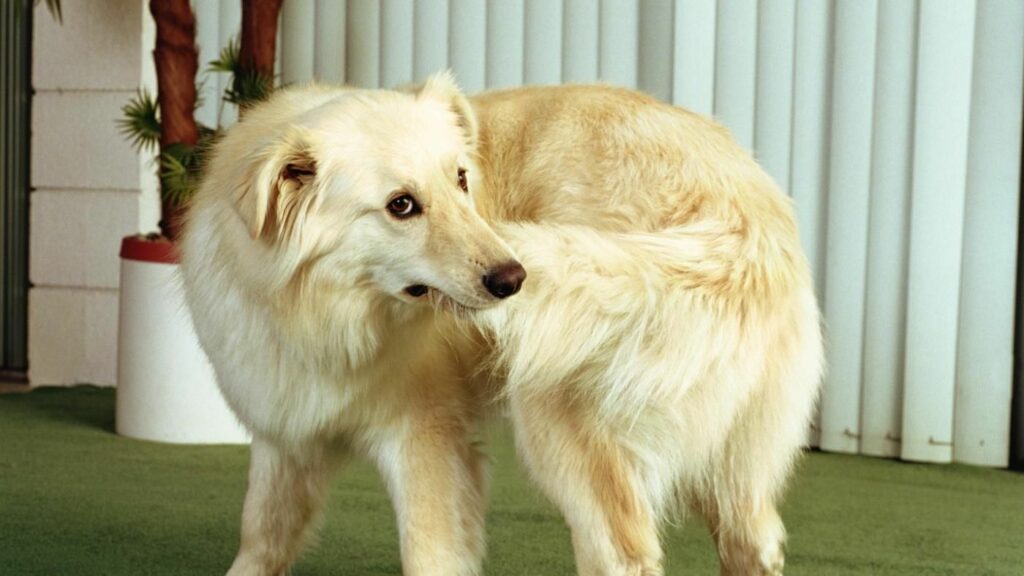Why do dogs chase their tail or spin in circles?

The sight of a dog chasing its tail in circles can be both adorable and puzzling. Many dog owners have wondered about the reasons behind this behavior. But while tail-chasing is a common canine conduct, it’s not always as simple as it seems.
Instinctual Behavior and Playfulness
Tail-chasing can be traced back to a dog’s instinctual behavior and its natural inclination for play. Animal behaviorists suggest that this behavior is reminiscent of a dog’s ancestral roots. In the wild, canines engaged in playful activities as a means to hone their hunting and agility skills. Chasing one’s tail could be a way for dogs to exercise and practice coordination.
In a 2013 article in Psychology Today, Stanley Coren, a professor emeritus of canine psychology at the University of British Columbia and a recognized expert in dog behavior, noted that puppies, in particular, may chase their tails as a form of self-amusement and to explore the world around them. This playful behavior can often be seen in young dogs who are inquisitive and full of energy.
Boredom and Lack of Stimulation
Tail-chasing in dogs is not always a playful or harmless behavior. It can also be an indication of boredom or a lack of mental and physical stimulation. Dogs are intelligent animals, and when they find themselves in an environment with limited activities and stimulation, they might resort to tail-chasing as a way to pass the time.
This behavior is often seen in dogs that are left alone for long periods or in environments where they do not have access to toys or other forms of entertainment. It is important for dog owners to provide their pets with plenty of mental and physical stimulation. This can include regular walks, playtime, and access to toys and other enrichment activities.
If tail-chasing becomes excessive or obsessive, it is important to consult with a veterinarian or animal behaviorist to determine the underlying cause and develop a plan to address the behavior.
Attention-Seeking Behavior
Dogs are social animals that thrive on interaction and attention from their human companions. They are highly attuned to human reactions and may engage in tail-chasing as a means of seeking attention.
When a dog notices that tail-chasing elicits a response from their owner, such as laughter, praise, or interaction, they may be encouraged to repeat the behavior. In these cases, tail-chasing becomes a way for the dog to seek attention and engage in a form of interactive play with their owner.
However, it’s important to note that while attention-seeking behavior may be a reason behind tail-chasing in some cases, there are also other factors, such as anxiety or boredom, that can contribute to this behavior.
Underlying Medical Issues
While the above explanations are often the most common reasons for tail-chasing, it’s essential to consider that this behavior can sometimes be a sign of underlying medical issues. In a 2008 article published in the Journal of the American Animal Hospital Association, veterinarians discussed the connection between tail-chasing and various medical conditions, such as allergies, skin irritation, anal gland problems, or neurological disorders. If a dog’s tail-chasing is persistent, it’s important to consult with a veterinarian to rule out any medical concerns.
In conclusion, tail-chasing in dogs is a multifaceted behavior that can stem from a combination of instinctual playfulness, boredom, attention-seeking, and occasionally, medical issues. Understanding the underlying reasons for this behavior is essential for ensuring the well-being of your pet.
As responsible dog owners, it’s important to provide dogs with mental and physical stimulation, as well as a safe and engaging environment to reduce boredom. If tail-chasing becomes excessive or is accompanied by other concerning symptoms, it’s advisable to consult with a veterinarian to address any potential medical concerns.










